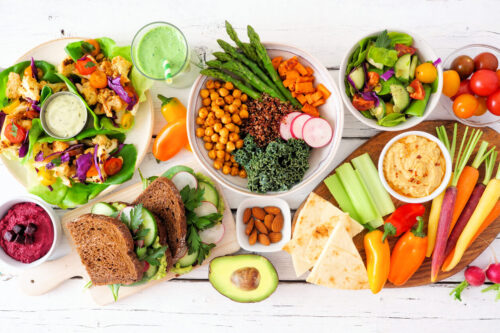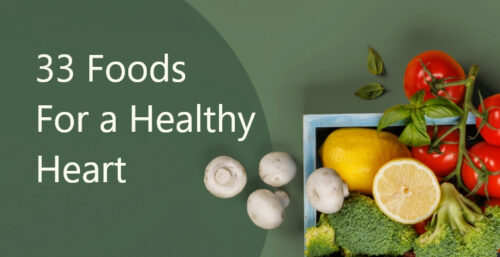Successful Weight Loss Tips
I believe in the perfection of nature’s design. Everywhere I look there is an interrelationship among all living things and the surrounding environment that supports harmonious survival and growth. I find it hard to believe that the human being would be any less well taken care of than other animals and plants on this Earth. Then why is it that our hunger drive seems to be mismatched with our needs and the size of our stomach, so that we have to consciously count every morsel of food that passes our lips for fear we will gain weight?
I believe that there must be a set of rules for choosing foods that are correct; so that our hunger drive always causes us to take in the right amount of food, that happens to fit our perfectly-sized stomach and meets our needs – and as long as enough of the right foods are available we remain at a trim, healthy body weight. It only follows that if we become more active, then the hunger drive increases to take in the appropriate amount of food so that we stay at this ideal.
So what is that set of rules for food choices that match our evolutionary design – a blueprint that has taken millions of years to bring us to our present physical 21st century condition?
The Human Diet
I believe the right food choices are the ones that most people who have ever walked this planet have made (not by choice, but by circumstance) and still 60% of the world’s population makes today. If you were to look down upon the Earth and have the chance to see the physical condition of various populations of people and could see their food choices, you could figure out the best diet. You would pick populations you found to be the trimmest, most active, and youngest looking. And who would these be?
Certainly not Americans with their diet centered on meat, dairy and refined products.
Likely you would choose an Asian population such as Chinese, Japanese, or Koreans. These diets of these people are centered around starches (rice in this case). You would note similar good health in many of the people living in:
- The Middle East with plates full of chickpeas and rice,
- Many African populations with diets of beans and grains,
- The people in Peru living on potato-based diets,
- Those islanders living in the central highlands of New Guinea, and
- The farmers in central Mexico living on corn tortillas, beans and rice.
Rules for the Healthy Human Diet
A starch-based diet is what the McDougall Program is all about. Here are some simple rules for maximum, permanent, painless weight loss:
1) Pick food low in calorie concentration, so you fill your stomach with fewer calories.
2) Avoid fats of all kinds, because the fat you eat is the fat you wear.
3) Eat foods high in complex carbohydrate, because carbohydrate satisfies the hunger drive.
Starches, vegetables and fruits fit these three criteria – they are calorie dilute, low fat and high carbohydrate.
Meats, dairy products and vegetable oils are the opposite: calorie dense, high fat and low in carbohydrate.
So the right set of food rules to best meet our health and appearance needs is to choose a diet based on plant foods. But there are some refinements that make the diet even more effective:
Refinements for Maximum Weight Loss
Thrive on Unrefined Starch:
Starches are low in calories (calorie dilute), low in fat (the fat you eat is the fat you wear) and high in carbohydrate (which satisfies the hunger drive). But there are sufficient calories in starches to meet your needs for energy and to satisfy hunger.
Some starches, like squash and potatoes, are particularly low in calories and good for rapid weight loss.
Starches like beans, peas, and lentils slow the emptying of the stomach, keeping you full longer, and thereby encouraging weight loss.
Avoid Refined Foods and Flours:
Those interested in the maximum efficiency for weight loss should eat starches in an unprocessed and unrefined condition. This means you minimize your intake of flour products. Flours are more rapidly absorbed with a greater rise in insulin levels than are the whole grains. The reason for this is when you cut a kernel or grain into a thousand pieces with the steel blade of a grinder; you dramatically increase the surface area for absorption through the intestinal wall.
Insulin’s job is to push fat into fat cells (adipose tissue) where it is stored as the ‘metabolic dollar’ for the day when no food is available – but for almost everyone in Western societies that day never comes.
Eat Green and Yellow Vegetables:
Traditional diet foods are very low in calories, so they fill the stomach easily with few calories, but they are also less satisfying for the hunger drive. Eat more low-calorie green and yellow vegetables, like broccoli, cauliflower, peapods, lettuce, and sprouts for rapid weight loss.
I suggest about 1/3 of the meal should be from these low-calorie vegetables. If you are desperate, then you may push that amount to ½ of your plate (measured by the eyeball). However, be careful that you do not eat so many of these low-calorie foods that your meal plan is no longer satisfying, because then you won’t want to stick with it for the long run.
Eat More Raw Foods:
Cooking begins the digestion process of foods and breaks complex sugars into simpler (sweeter tasting) sugars. However, sugars are more easily absorbed into the body and raise insulin levels higher than complex carbohydrates.
Avoid All High-Fat Plant Foods:
Nuts, seed, olives, avocados, and soy products (in their more natural forms) are high in fat that you will wear. Vegetable oils, like olive, corn, safflower, and flaxseed oil are 100% fat that will be transferred effortlessly to your chin, buttocks, thighs and abdomen.
Avoid Sugar:
Minimize sugar intake. Sugar raises insulin levels. Especially obvious sources of sugar, such as white and brown sugar, maple syrup, and honey should be avoided. These are also concentrated calories, so you can eat many calories in a small volume of food.
Dried fruits are even bigger calorie bombs. Because they are now so concentrated you can eat 20 dried apples in the time it would take you to eat 2 whole fresh apples.
Eat Slowly:
Eat many smaller meals (8 to 14 a day), rather than a few large ones (1 to 3 a day). The advantages of frequent small meals are: Less dependency on storage mechanisms, because food is always available to the body, lower insulin levels, and the body is able to receive more timely messages that you have eaten.
Here is a helpful tip. Divide any meal into smaller portions. For example, eat a medium size plate of food for dinner, leave the table for half an hour, and if you are still hungry return for another similarly-sized plate. This break gives the body and mind time to receive the messages from the stomach and intestine that you have eaten. Gorging on a large meal generally means you will take in way more food than you need before you can allow time for the food to register centrally.
Keep Your Meals Simple:
Variety causes you to eat more. So, if you like something, eat it over and over again. You don’t have to worry about adequate nutrition with simple meal plans as long as the foods are unrefined and based around a starch with a fruit and/or vegetable.
Lower Salt Intake:
Saltiness is a taste enjoyed by taste buds on the tip of the tongue. Therefore, we are naturally seekers of salt. Many times eating will be driven by stimulating this desire for salt rather than by hunger and in this manner we will take in more food than we need.
It’s OK to be Hungry:
Sometimes you will find yourself in a situation where there is no healthy food available – like when you are out shopping, at a party, or dining with friends. You don’t have to eat. No harm will be done. You won’t starve to death by waiting a few hours until something healthy is available. In this case delaying gratification is the smart thing to do, because you will suffer pangs of guilt and pains in your stomach for as many hours as you would have had to wait from something delicious and ‘body-friendly’ to eat.
Exercise:
Exercise burns calories and causes you to take in a more appropriate amount of food.
Placing physical demands on your body also will send it a message that you need to be trimmer. Your body will adjust so that you will be able to run the mile and climb the mountain.
Exercise before (rather than after) you eat to suppress your appetite even more.
Avoid Alcohol:
Alcohol provides calories. Alcohol does not turn into fat, but the body would rather use alcohol calories for food, and as a result leaves the fat in your fatty tissues. Alcohol lowers inhibitions so you ‘can’t just eat one.’
How Well Does the McDougall Program Work?
We have collected weight loss data on over 2000 people and find that with unrestricted eating of the basic McDougall Program the average weight loss for overweight women is about 4 pounds and the loss for overweight men is 6 pounds in 11 days. This translates into 8, 10, 12, 16, and 20-pound weight losses each month. These people are never hungry, they eat delicious foods, and they lose weight without thinking about it – no suffering with hunger pains or any complicated formulas and rules to follow. And the weight loss is permanent, because they are doing something natural and normal – eating food they enjoy to the full satisfaction of their normal healthy appetite. This is the way Nature had to have intended life to be for people – it makes no sense for life to be lived otherwise.
You can read more about this subject, with recipe help, in the book The McDougall Program for Maximum Weight Loss.
Recommended Articles

How to Start a Plant-Based Diet

33 Foods For a Healthy Heart






